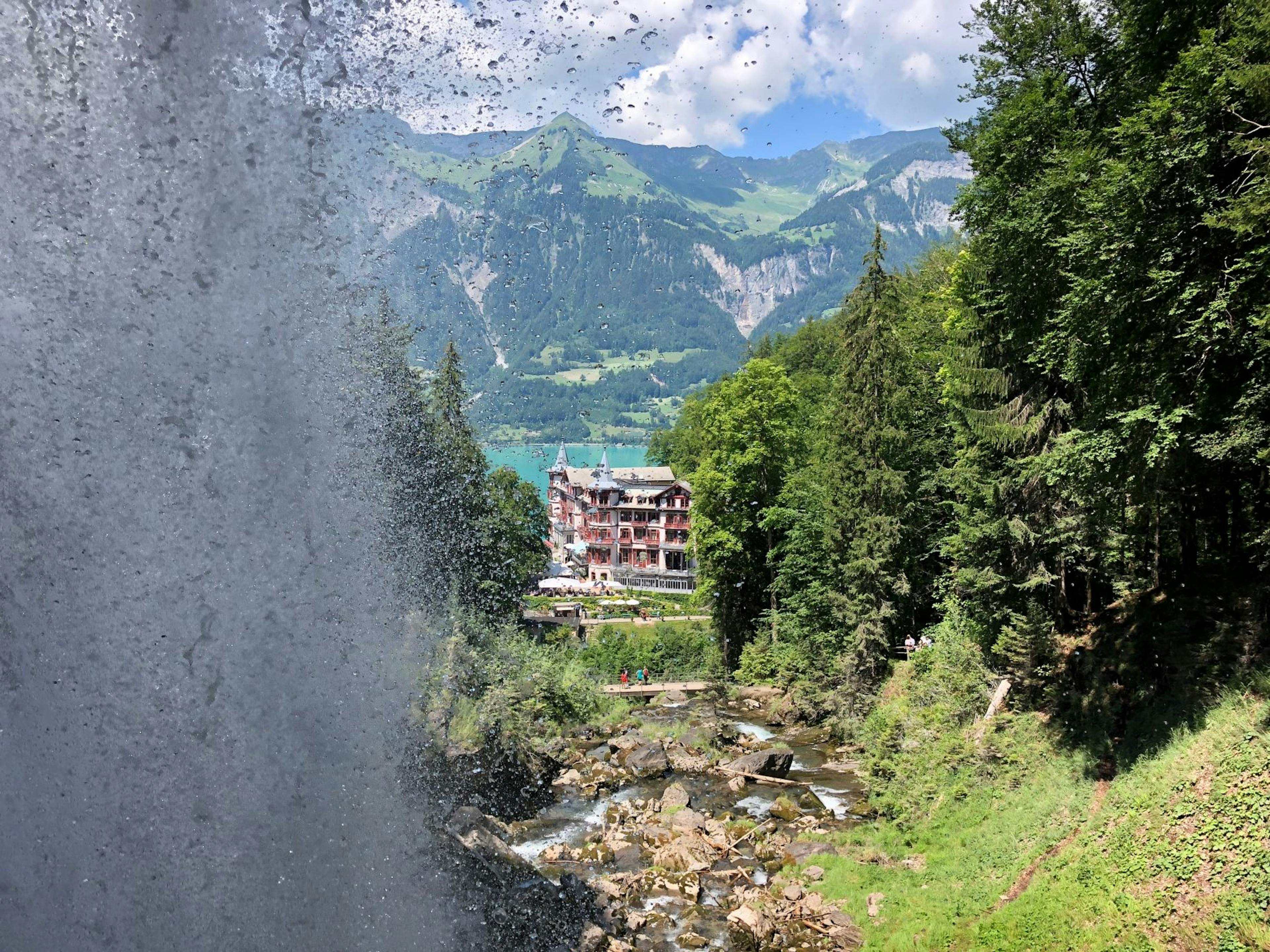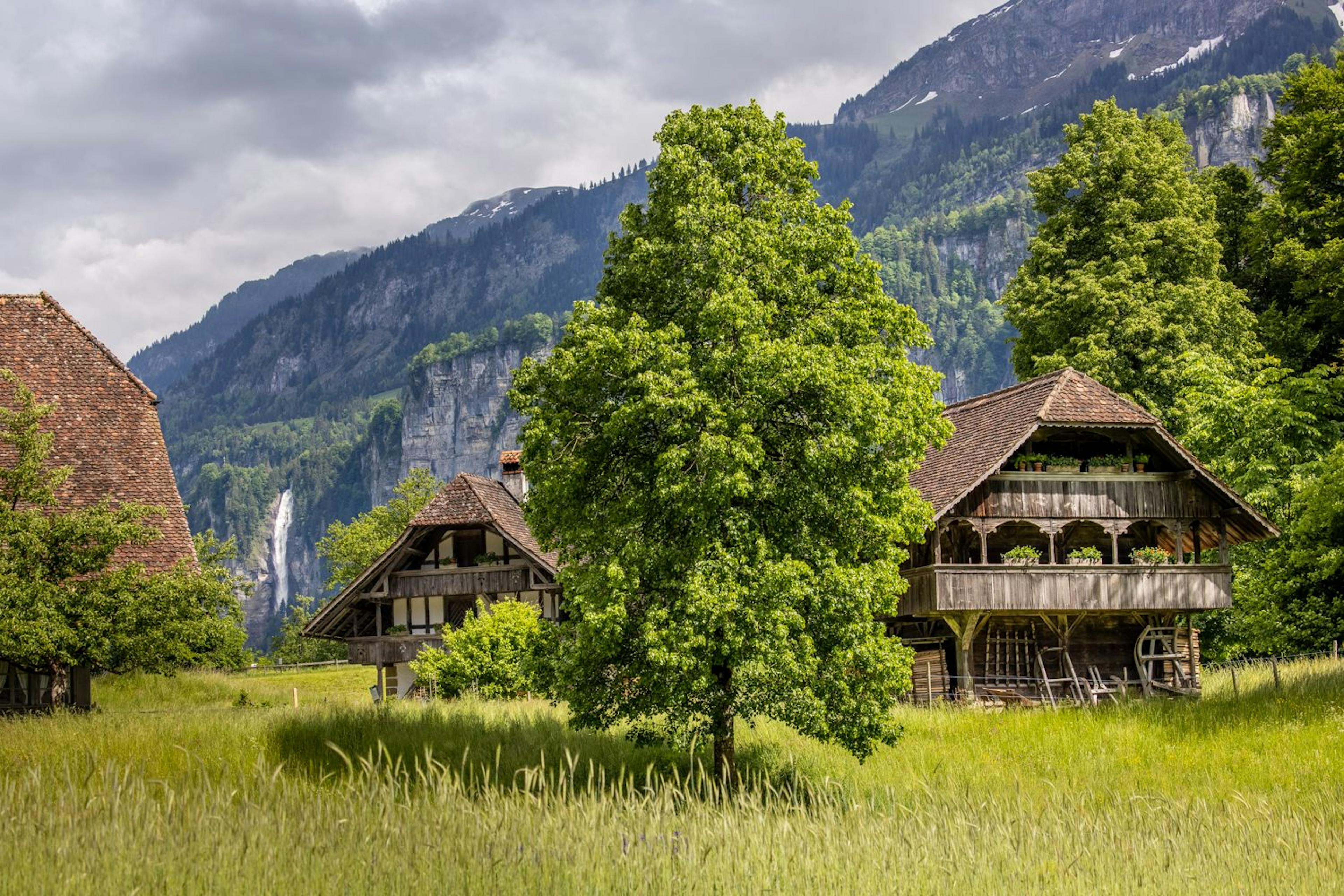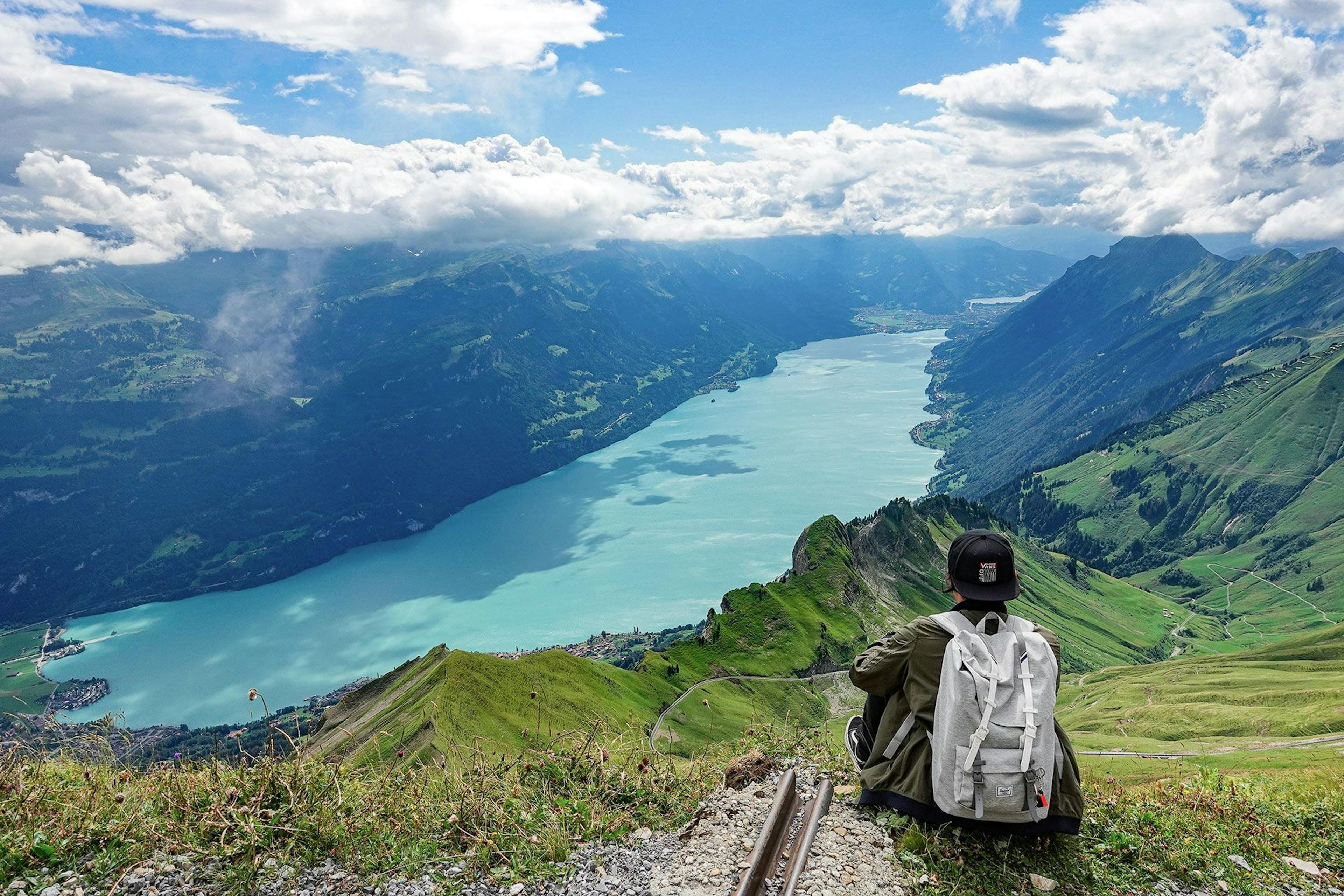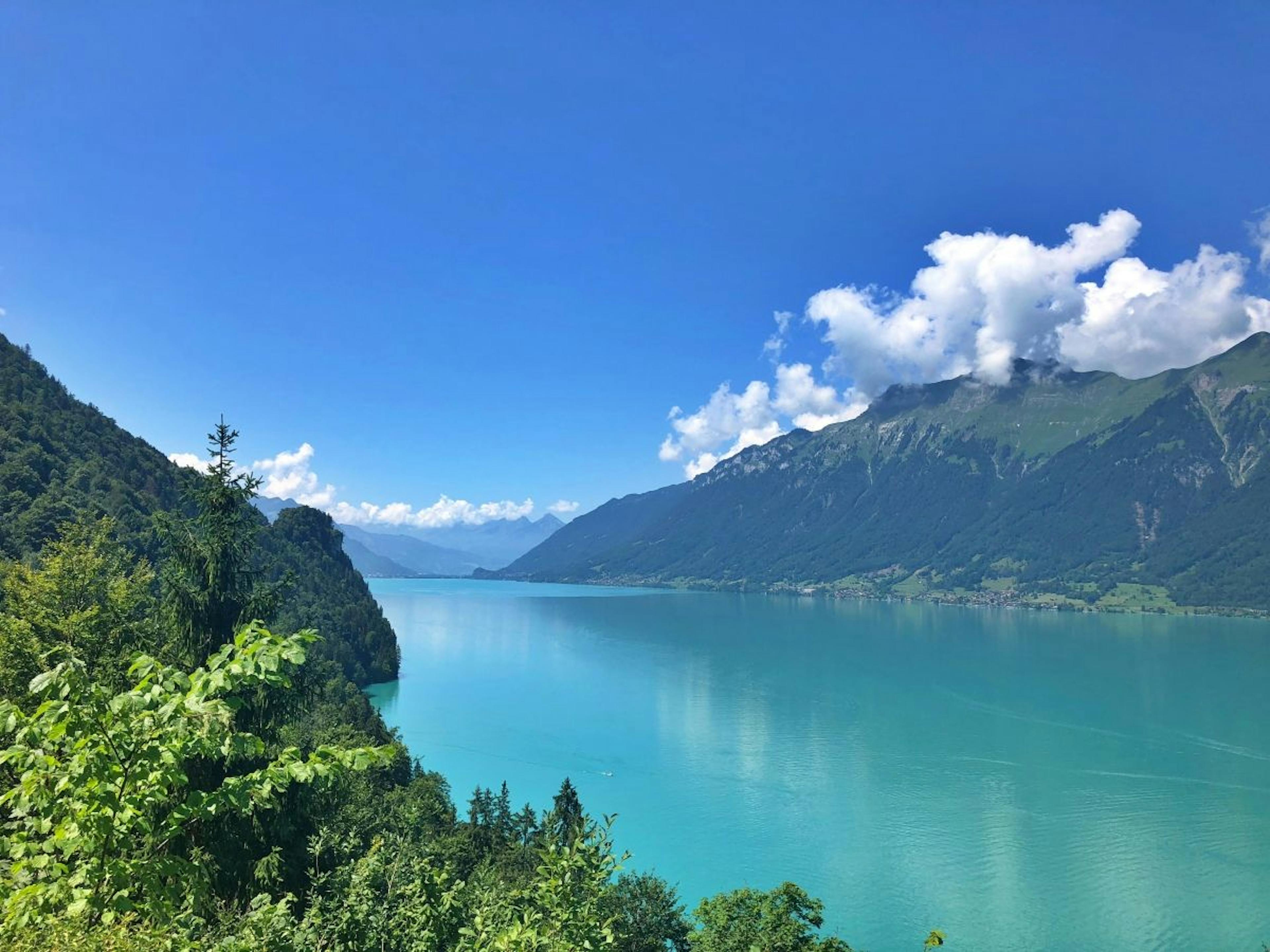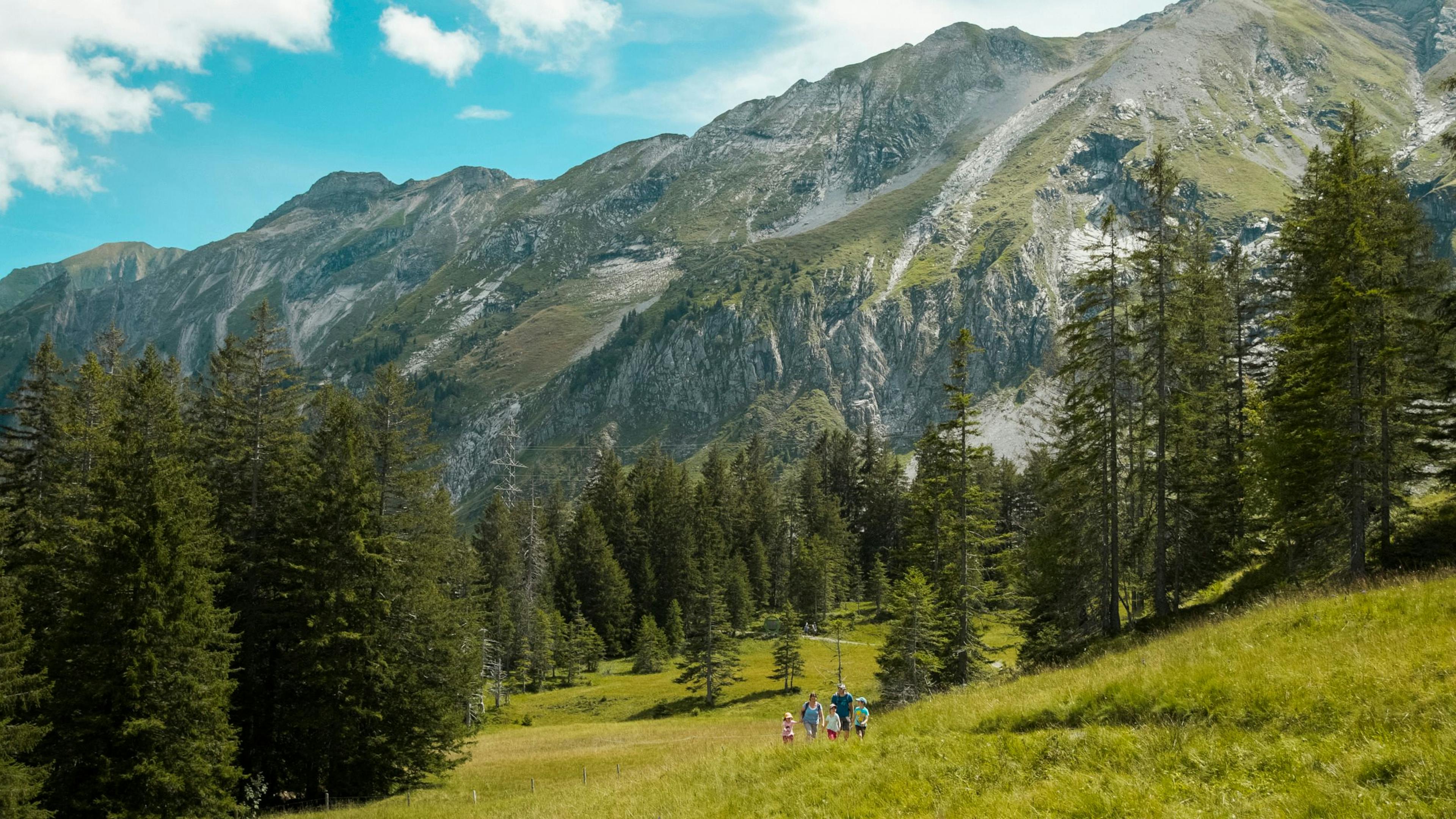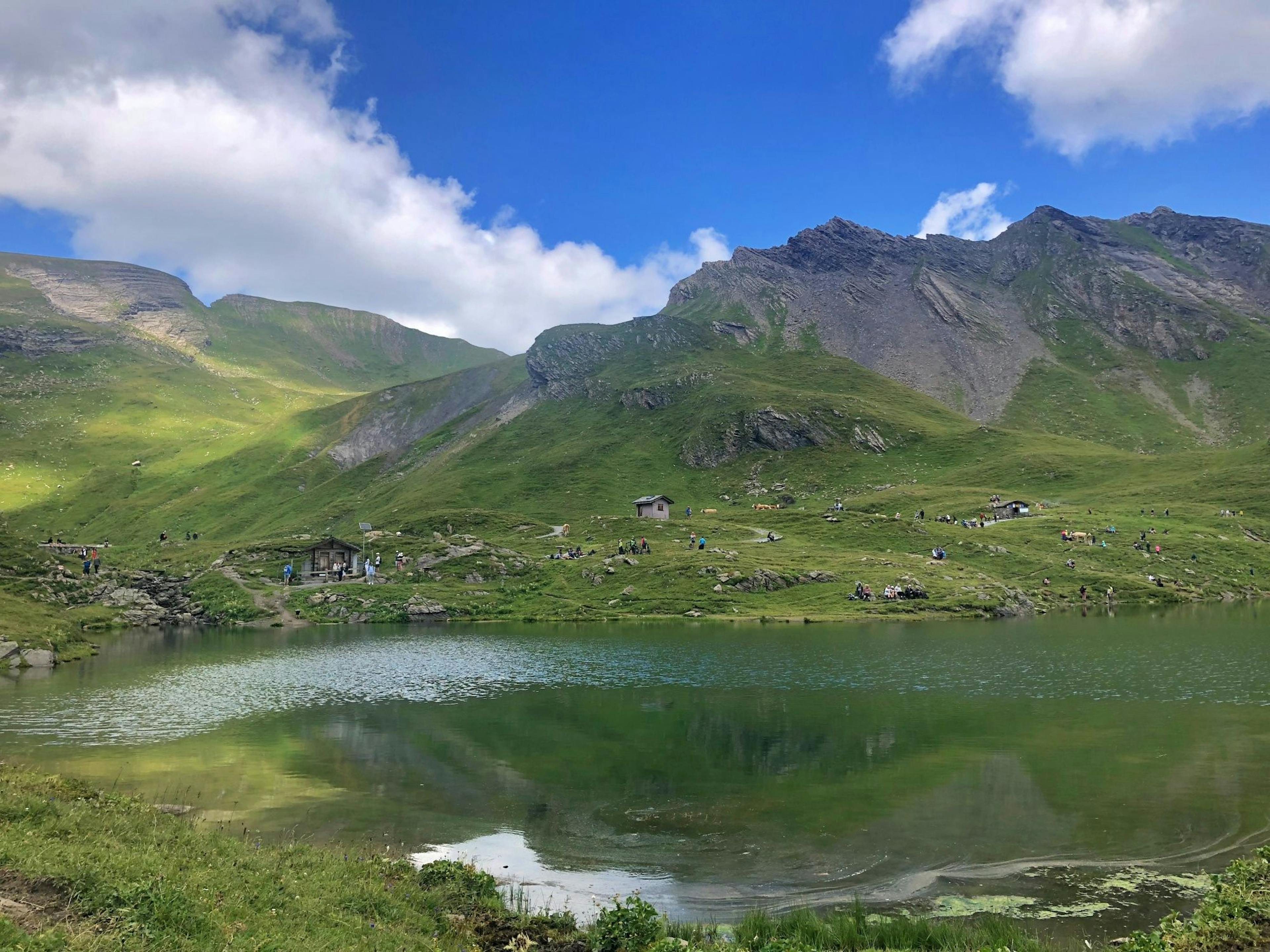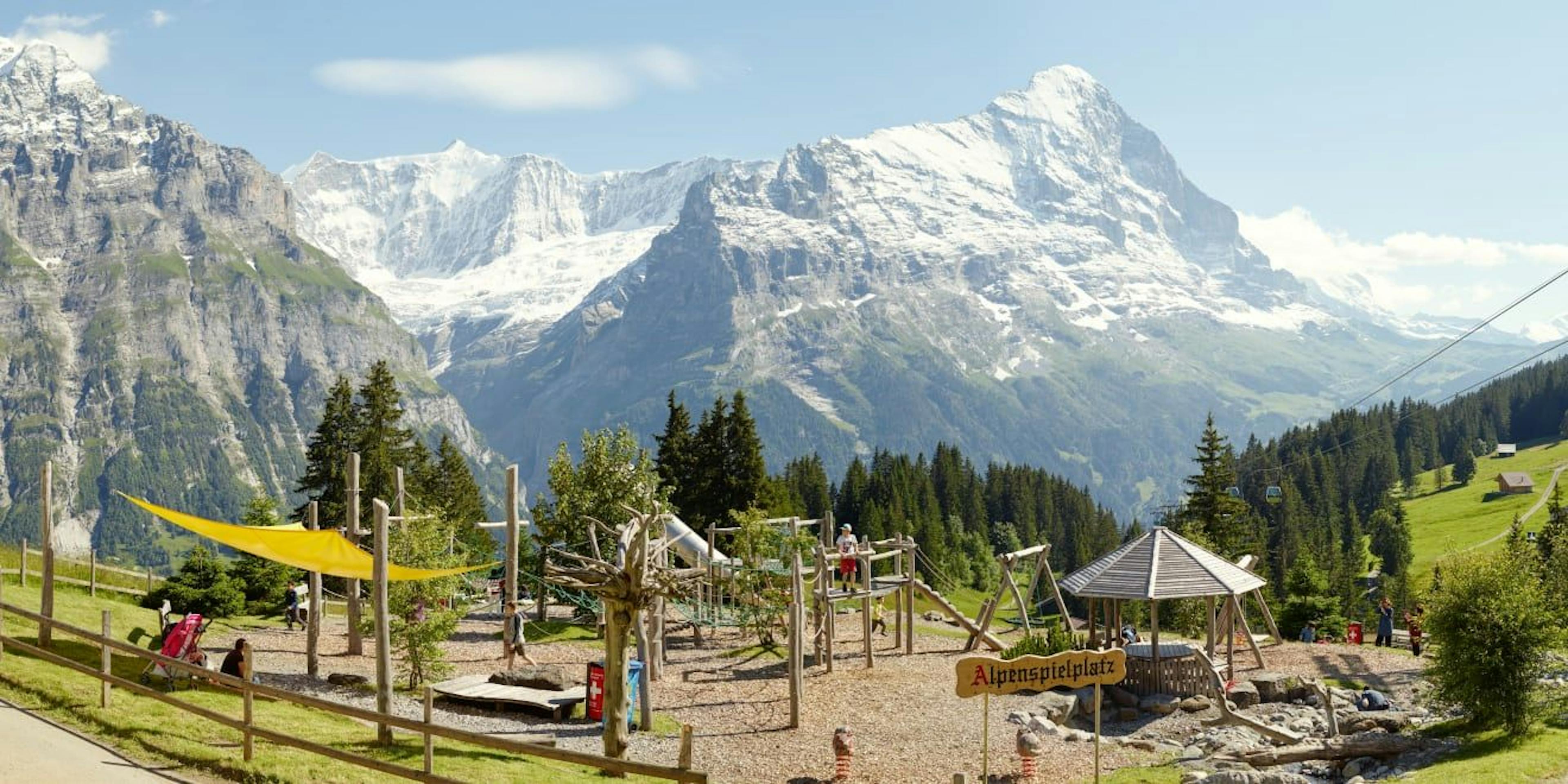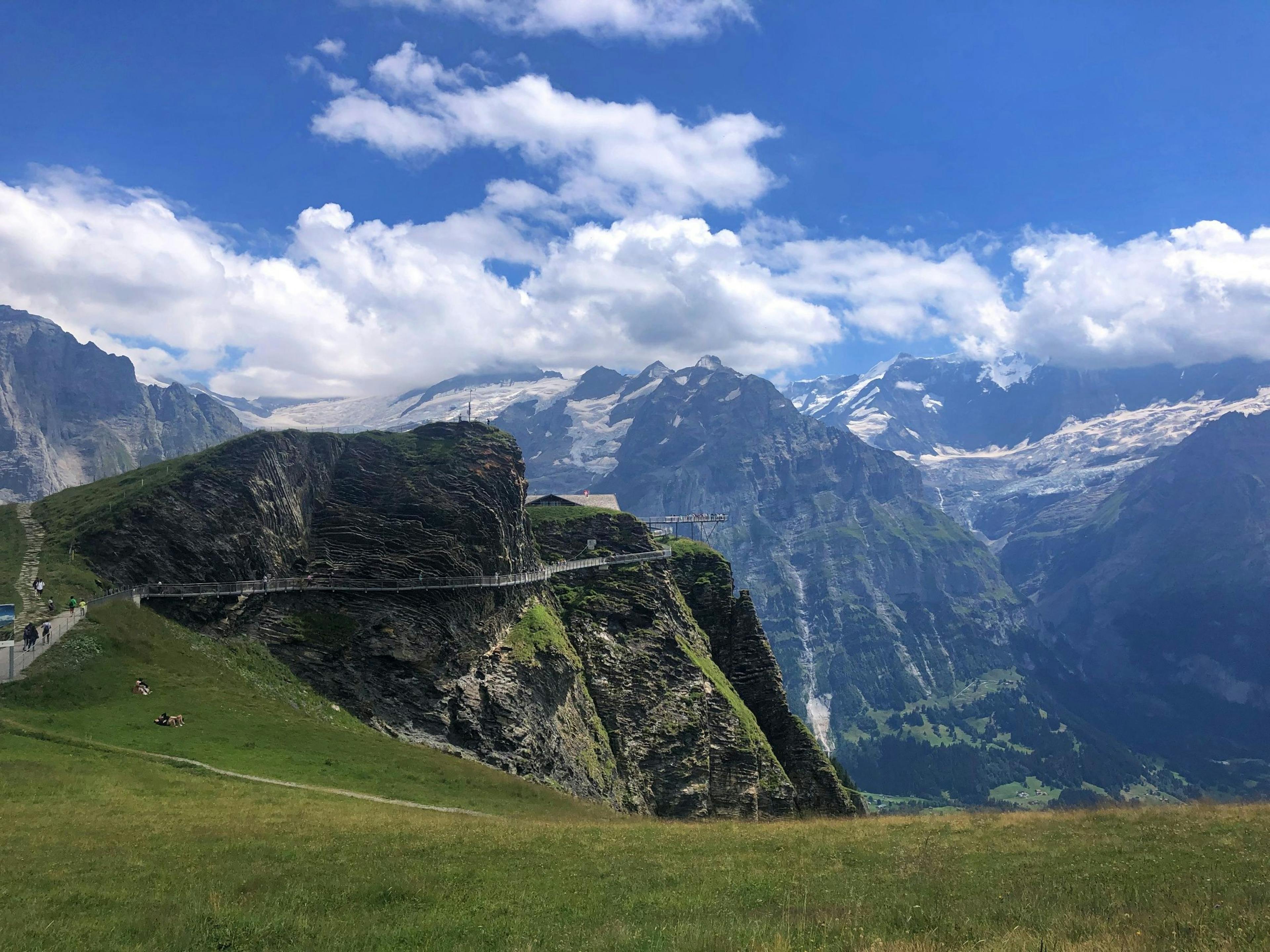6 Highlights of the Giessbach Falls
- The mighty water masses of the Giessbach Falls flow over 14 rock steps and 400 meters into the depth. The roar is audible from afar, especially when the water is high.
- A circular path winds its way past the various steps of the falls for 20 minutes. At one point it passes behind one of the waterfalls, offering a unique view behind the scenes.
- The modern lighting of the Giessbach Falls at night transforms the natural spectacle into a unique play of light.
- Right next to the waterfalls is the historic Grandhotel Giessbach. It towers over the glittering Lake Brienz with its beautiful architecture.
- Optionally, at the end of the circular route, you can continue your walk up to the Gippi lookout point. There you can enjoy a fantastic panorama of Lake Brienz and the surrounding area.
- From the boat station "Giessbach See" a historic funicular, the Giessbachbahn, goes up to the waterfalls. This mountain railroad is the oldest funicular in Europe serving leisure tourism.
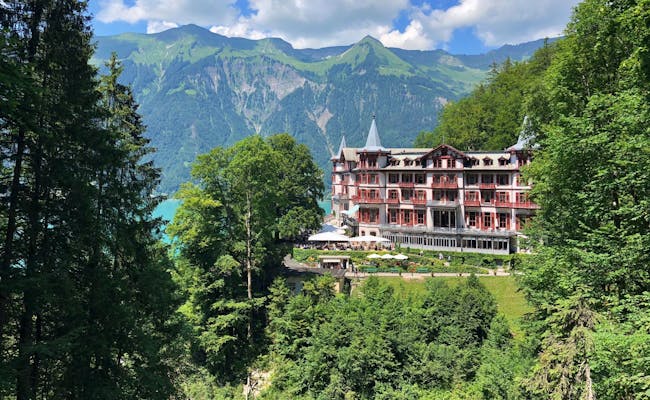

What to Expect at the Giessbach Falls
Switzerland is known as the water castle of Europe. With abundant water reserves, the landscape offers a variety of water-related natural attractions. One of these is the Giessbach Falls near the Lake Brienz. At the waterfalls, massive torrents cascade over 14 rocky levels, plunging 400 meters down. Visitors can easily explore this spectacle on a pleasant walking path.
The 20-minute loop trail guides visitors past the various tiers of the falls. At one point, the path even goes behind one of the waterfalls, allowing you to feel the immense power of the water firsthand. The falls are particularly impressive in spring during the snowmelt or after rainfall. In the evenings, the cascades are illuminated by a modern lighting system, transforming the spectacle into a stunning light show.
The area around the Giessbach Falls invites you to linger. If you continue up the path at the end of the loop, you'll reach the Gippi viewpoint after about 40 minutes. There, you'll be treated to a fantastic panorama with the sparkling Lake Brienz and surrounding hills. Right beside the Giessbach Falls is the Grandhotel Giessbach. This historic building towers over the surroundings and fits perfectly into the idyllic landscape.
Getting to the Giessbach Falls
The Giessbach Falls are located above the southern shore of Lake Brienz. They're easy to reach by car or public transport. Right next to the waterfalls, you'll also find the Grand Hotel Giessbach.
By Car
You can easily reach the Giessbach Falls by car from Brienz. Just follow the Axalpstrasse until the intersection and take the turnoff towards the Giessbach Falls. There's a small parking area for visitors next to the attraction. The road is quite narrow and isn't suitable for large vans or motorhomes. From the parking area, it takes about 5-10 minutes on foot to get to the first viewpoint of the Giessbach Falls.
By Public Transport
For public transport, start by taking the boat across Lake Brienz to the Giessbach See station. The boat ride is beautiful and offers fantastic views of the lake panorama. At Giessbach See station, you get off and walk to the valley station of the Giessbach funicular. This historic funicular is the oldest of its kind in Europe serving recreational tourism. It takes you straight up to the Giessbach Falls, where you can start your loop walk.
For whom are the Giessbach Falls suitable?
The visit to the Giessbach Falls is suitable for all people and groups. The circular route is not particularly demanding and therefore also suitable for seniors. A visit is also worthwhile for smaller team events and school classes. In addition, the dog may be taken everywhere.
The Giessbach Falls are worthwhile in any weather. They are especially special in spring after the snow melts or after heavy rainfalls. The water masses at these times are much larger and so even more impressive.


